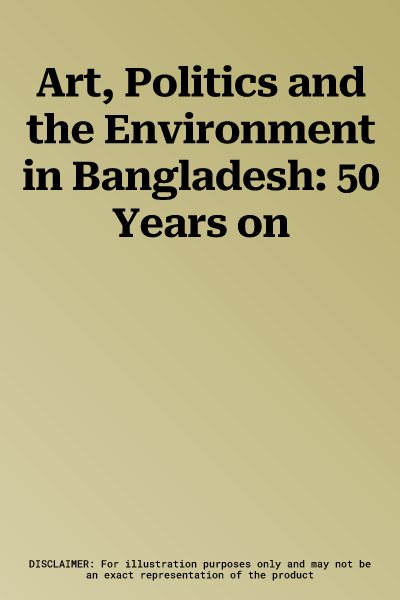'Art, Politics and the Environment in Bangladesh' provides a guide to
explore how shifting social and political realities of Bangladesh act as
the bases of historical events and cultural processes that are neither
self-evident nor complete. The essays trace these unfoldings from varied
disciplinary perspectives. Consider, for instance, two case studies
featured in the volume: the massive enthusiasm for staging local
elections for villages that have disappeared owing to the movement of
rivers or the resistance to the shrimping industry in areas disastrously
poldered by previous Dutch development interventions. They help
visualize the impact of the continuous rewriting and remaking - and at
times erasure - of the spaces and histories of a region variously known
as East Bengal, East Pakistan, and Bangladesh. The quandaries that
colonial bureaucratic classifications pose for staging the boundaries of
indigenous peoples in contemporary Bangladesh, or the politics of
reception of the representations - both off and on stage - of the 1971
war, are examples of such ground-making.
On an analytical level, the book privileges the particular fecundity of
staging as a political process. How do collective social imaginations
act as the staging ground for collective movements and cultural forms?
Answering this demands tracking the emergence, rather than the
taken-for-grantedness, of experiences and categories. This is
particularly relevant for a place like Bangladesh at once described in
terms of a lack (no state, no infrastructure, no law and order, no
money, no art and so on) and of debilitating excess (too much emotion,
too much water, too much corruption, too much faith and so on). Such
ideas have had concrete implications for national and foreign
development interventions, state policies and religious exchanges that
have created the political and geographical entity known as Bangladesh.
This paradox demands that we rethink some of the central analytical
categories of South Asian scholarship in light of what we know of
Bangladesh and its conditions of possibility. In so doing, the book
makes a case for studying Bangladesh for its ability to contribute to a
larger intellectual field than South Asian studies.

